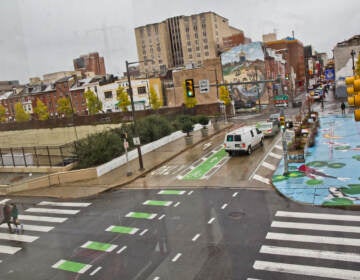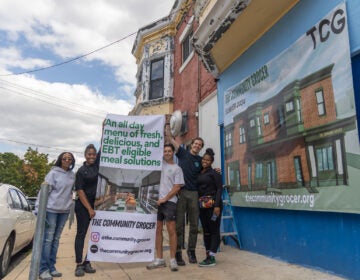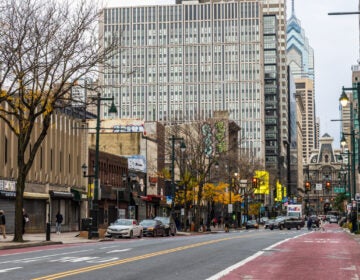Philly’s Lincoln Drive is the latest city roadway to receive traffic calming measures
The work is part of a pilot program launched by PennDOT to address speeding on state highways.
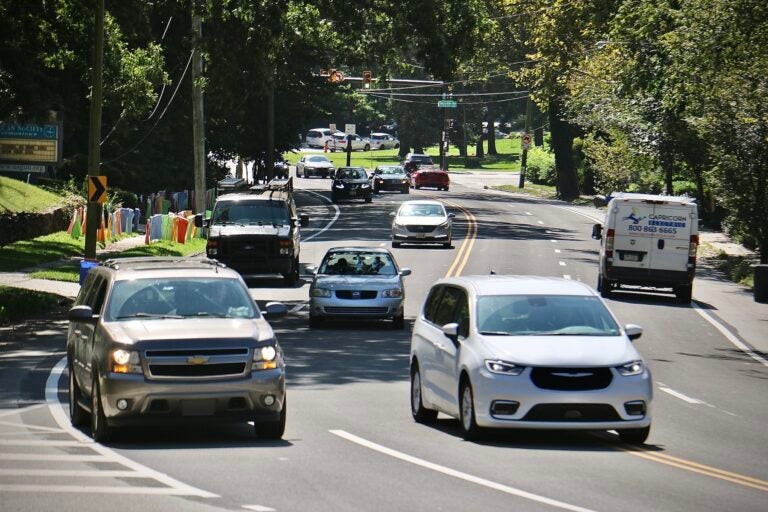
Traffic calming measures are planned for Lincoln Drive between West Allens Lane and Cliveden Drive. (Emma Lee/WHYY)
Have a question about Philly’s neighborhoods or the systems that shape them? PlanPhilly reporters want to hear from you! Ask us a question or send us a story idea you think we should cover.
A dangerous stretch of Lincoln Drive is getting a safety overhaul thanks to a partnership between the city and PennDOT.
A series of traffic calming measures will be installed along 1.5 miles of the state highway, between West Allens Lane and West Cliveden Street in West Mount Airy.
The upgrades will be installed over two phases as part of a pilot program, and include rumble strips and speed tables to slow down drivers, as well as traffic lane separators to stop them from using center turn lanes to pass other vehicles.
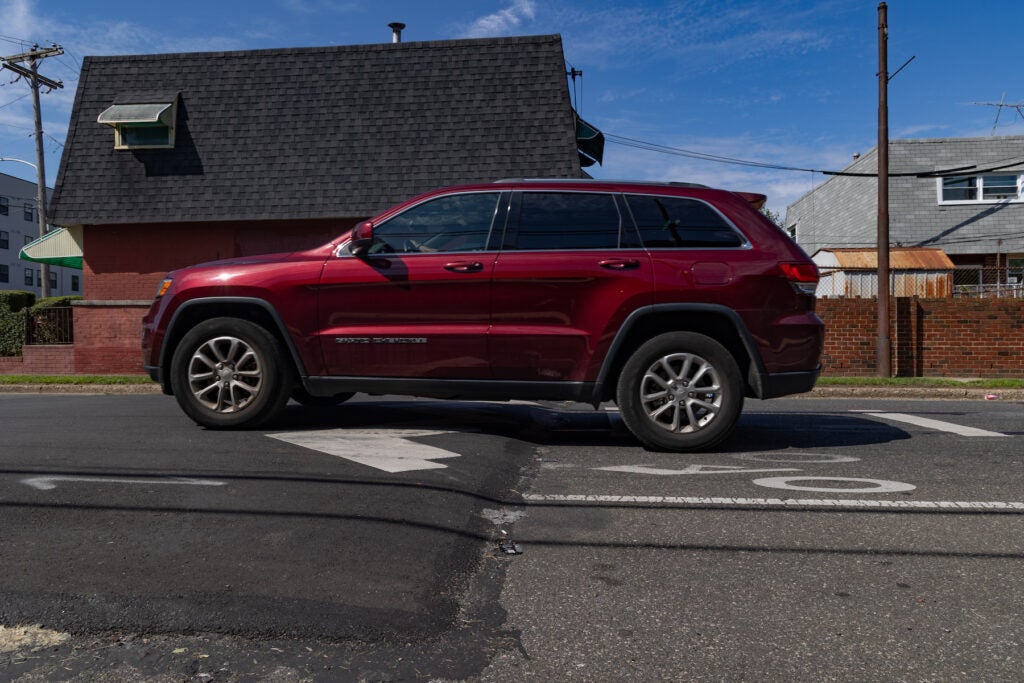
“Through all of these countermeasures, we’re trying to address those run-off-the-road crashes, as well as target that excessive speeding,” said Sharang Malaviya, a traffic safety supervisor with PennDOT District 6.
PennDOT crews are scheduled to start the first phase of the project next month with hopes of completing everything by Thanksgiving. Work on the second phase, when the city will install the speed tables, is expected to start sometime next year.
“Not all vertical deflection is the same,” said Malaviya. “We wanted to come up with an elongated table, which is a better design for a roadway like Lincoln Drive compared to maybe the speed cushions that we see on some of the smaller local roads.”
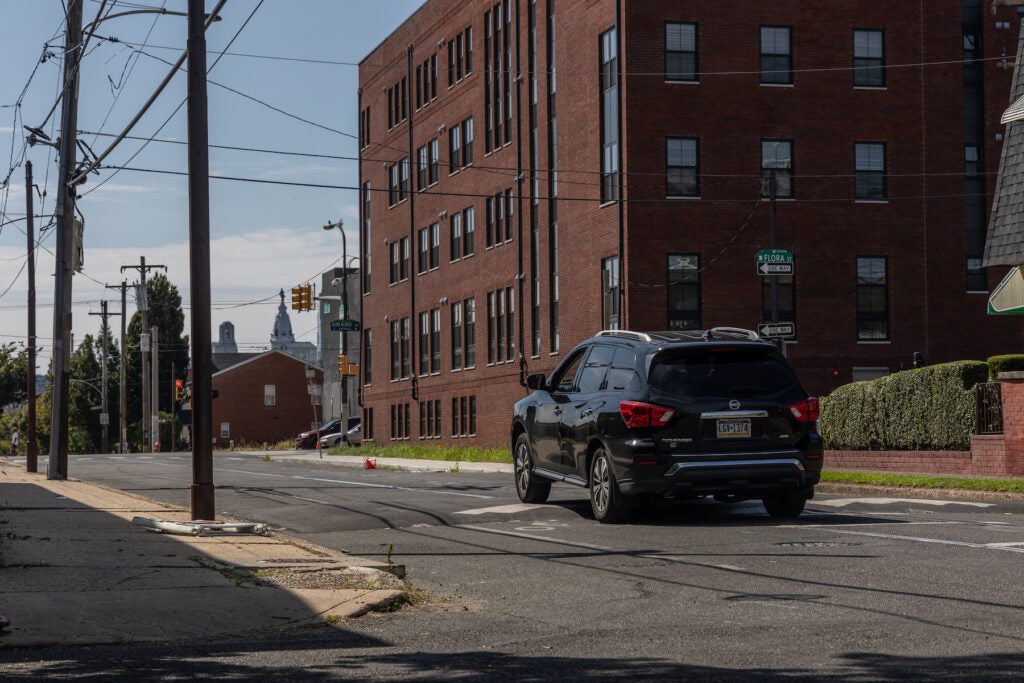
‘More and more’
Lincoln Drive will be just the latest roadway in Philadelphia with some form of vertical deflection, a category of devices designed to slow down drivers that includes speed humps, speed tables, and raised pedestrian crossings.
Crews with the Streets Department have been installing vertical deflection measures across the city since 2015.
To date, more than 350 blocks have them. And there’s an ongoing backlog of locations, in part because speed cushions are only installed one day a week — Saturdays, typically.
“We’re looking to slow down the city all over,” said Richard Montanez, deputy commissioner of transportation. “You’re gonna see more and more of them out there.”
For the last several years, the city has added about 50 locations to the list annually, said Montanez.
The process often starts with a resident submitting a request to Philly311, the city’s customer service center for non-emergency inquiries. But residents can also contact the Streets Department directly or discuss the need with their district councilmember.
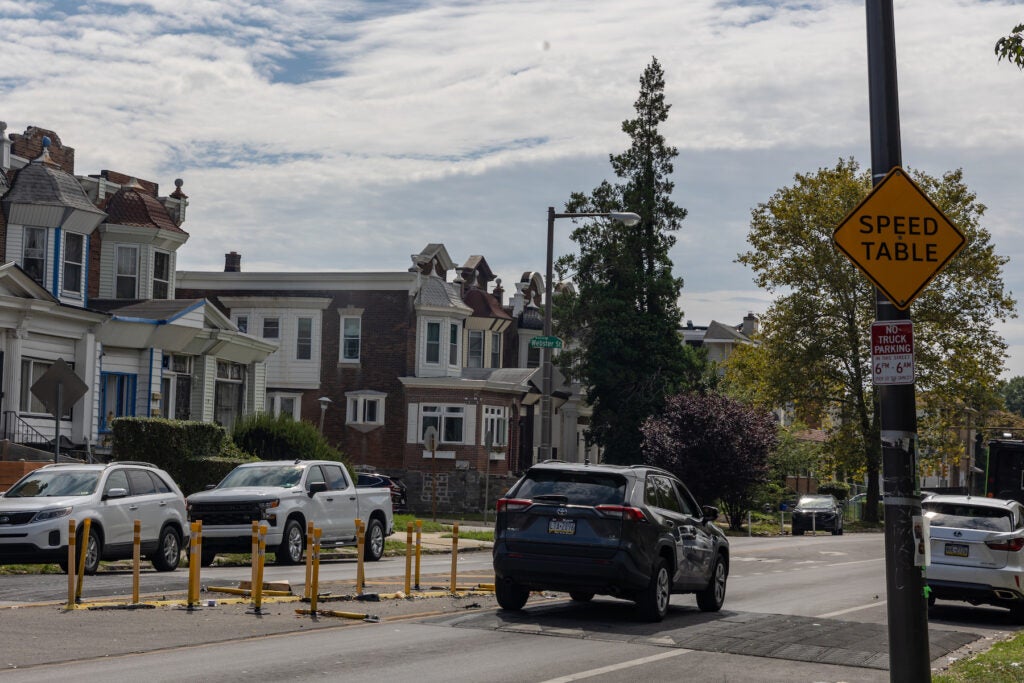
The Streets Department then conducts a two-week traffic study on the block, reviews crash data, and talks to neighbors to determine if the location meets its criteria for vertical deflection devices.
Generally, roadways must:
- Not be a state road or an arterial route
- Have a speeding problem
- Not have uphill or downhill grades of 15% or more, or be a curving street
- Be at least 1,000 feet long (typically two city blocks) between stop signs or traffic signals
- Be at least 34 feet wide if it is a two-way street and 26 feet wide if it is a one-way street
A roadway has a speeding problem if 85% of vehicles are traveling 5 mph over the posted speed limit, said Montanez. For example, a residential street with a posted speed limit of 25 mph would have a speeding problem if 85% of vehicles are traveling at least 31 mph.
The Street Department receives hundreds of requests each year, but only about 60% of them lead to speed cushions being installed, said a department spokesperson.
It typically takes six months to a year for a block to receive speed cushions. And that timetable may get longer while the department prioritizes installing speed cushions near district schools.
The program started with 50 locations.
“I do realize some requests have been sitting there for a while, but we’re trying to get to all of them,” said Montanez.
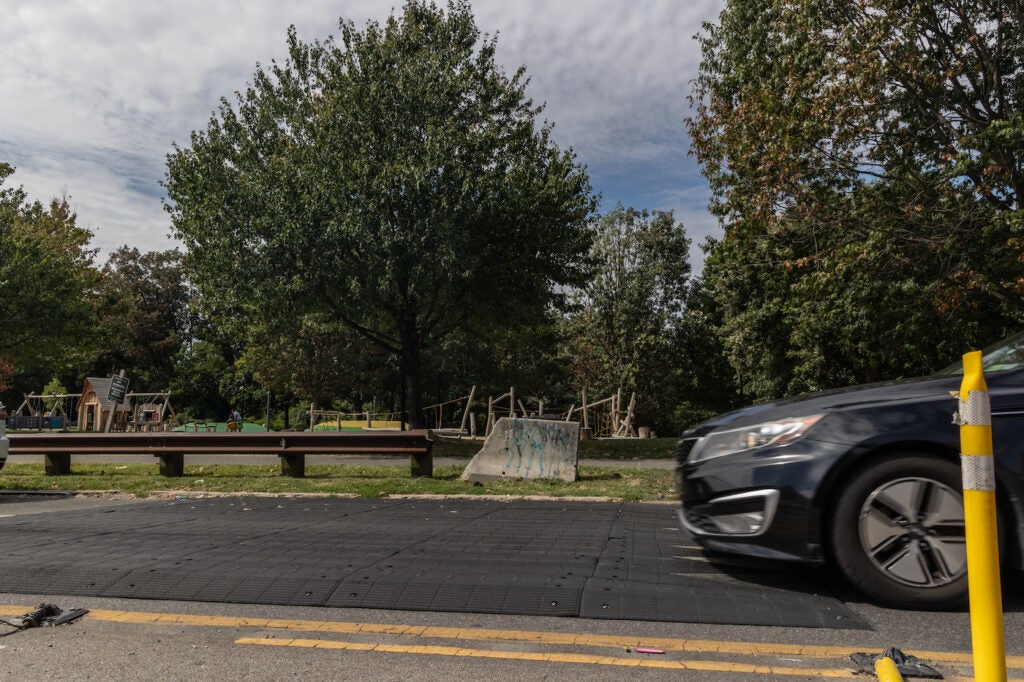
Worth the wait?
The work on Lincoln Drive follows a yearlong traffic study conducted by PennDOT. But neighbors had been pushing for traffic calming measures for well over a decade before the state agency publicly announced the projects earlier this month.
Those efforts intensified over the last year.
Longtime resident Anne Dicker, who heads the traffic calming committee of the West Mount Airy Neighbors, said there was a perception among neighbors that there were more car accidents along Lincoln Drive during the pandemic.
Stacked on top of a long history of speeding and crashes, the civic group decided to revive Dicker’s committee and take action.
“Crashes have been happening three times a week for years — right in front of people’s yards, right inside of people’s yards, and even cars crashing into people’s houses. So it was just a matter of, you know, ‘We’re mad as hell and we’re not gonna take it anymore,’” said Dicker.
Between 2018 and 2022, there was an average of 13 crashes a year between West Allens Lane and Wayne Avenue, according to data provided by PennDOT. The highest total was recorded in 2018, when there were 16 crashes along that stretch.
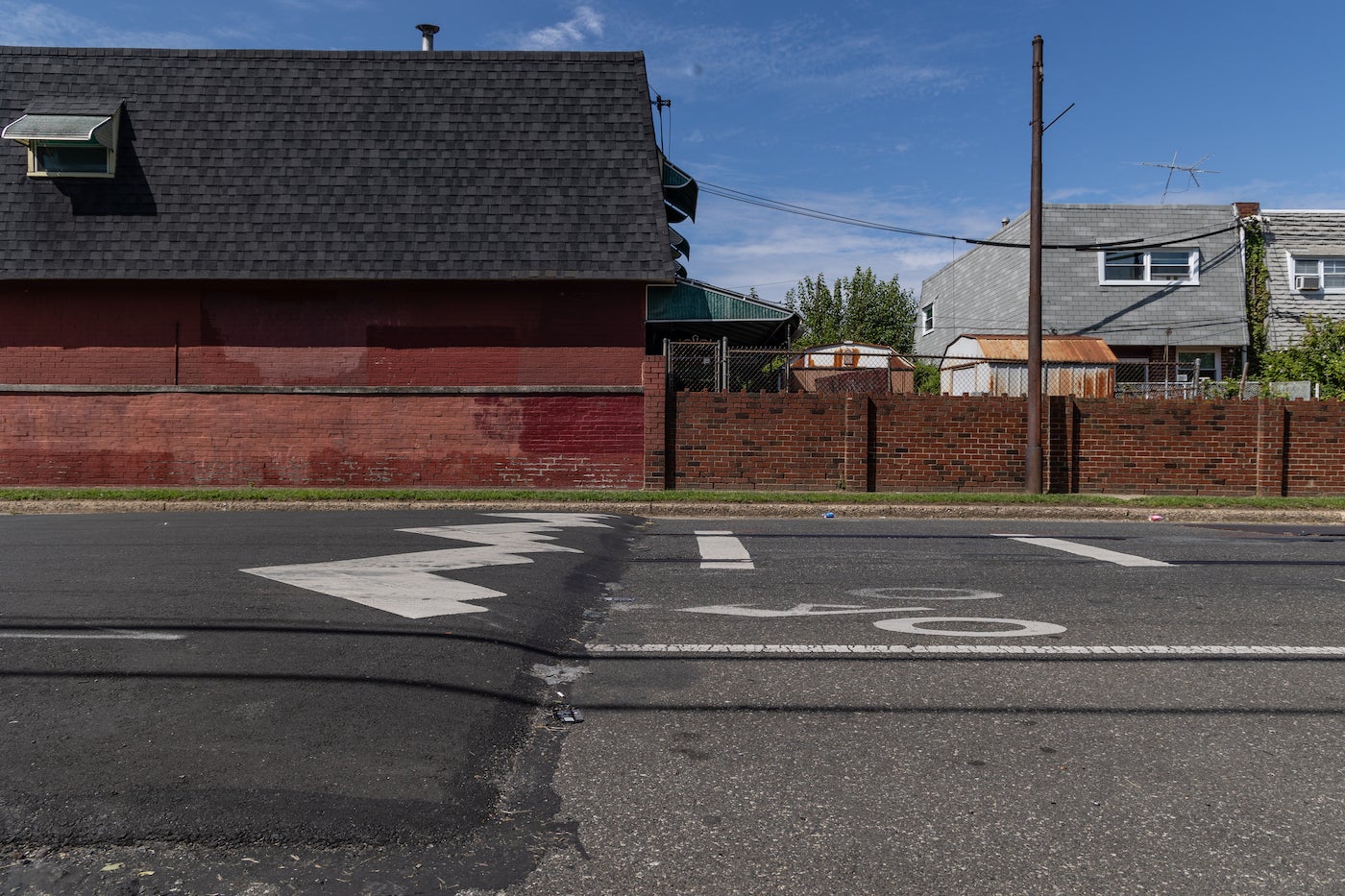
It’s why Dicker was thrilled when she learned last week that the PennDOT pilot program would be coming to Lincoln Drive. Officials say the program could lead to more state roads becoming eligible for vertical deflection measures.
“The speed tables are key. And they were the thing I fought the hardest for to get into this plan,” Dicker said.
“If it’s an extra 30 seconds it takes me to drive down that segment of Lincoln Drive, it’s absolutely worth those extra 30 seconds to make sure that I’m not killing somebody,” she said.
Lincoln Drive will be the second state road to get vertical deflection devices through the PennDOT pilot. The state agency previously approved installing speed tables along a stretch of Cobbs Creek Parkway in West Philadelphia.
The community-led effort to bring traffic calming measures to the parkway became more concerted after a deadly hit-and-run in August 2020. That month, a driver struck and killed 25-year-old Avante Reynolds, the mother of a 2-month-old baby, while she was trying to cross the four-lane highway. Less than a month earlier, another incident on the parkway left two people dead.
“We always said ‘We need more safety precautions on these blocks, and can you please help us?’ And we feel as though finally our request was addressed, and we’re thankful for that,” said block captain Deborah Roebuck, who has lived on the parkway for decades.
Asked if the speed tables have made a difference, Roebuck gave a mixed review. She does feel a bit better about crossing her section of the parkway, where there is no traffic light or stop sign. But she said there are plenty of drivers who only slow down some.
“I feel heard, but I think there’s more that needs to be done,” said Roebuck.

Subscribe to PlanPhilly
WHYY is your source for fact-based, in-depth journalism and information. As a nonprofit organization, we rely on financial support from readers like you. Please give today.




